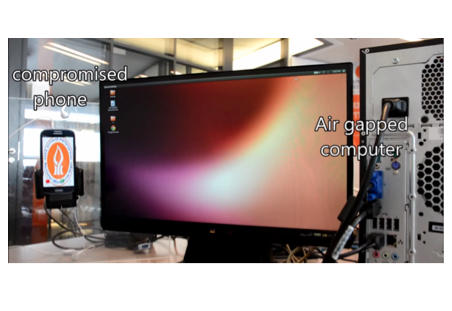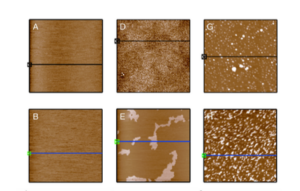Airhopper (BGU), une technologie qui enregistre à distance et discrètement ce que l'on tape sur son clavier !

[:fr]En collaboration avec le Pr Mordechai Guri, le Pr Elovici a développé une technologie révolutionnaire du nom de Airhopper : en utilisant uniquement les signaux radios FM d’un téléphone portable classique, ils ont réussi à infiltrer un ordinateur déconnecté de tous réseaux (Internet, wifi, bluetooth,…) et à récupérer les données qui étaient tapées sur le clavier. En clair, demain peut-être, sans aucun moyen de s’en rendre compte, alors qu’on attend son avion en salle d’embarquement, un hacker assis à nos côtés pourrait tranquillement récupérer tout ce que l’on tape sur son clavier à l’instant même où on le tape. AirHopper est un type un peu spécial d’application dite « keylogger », c’est-à-dire qui enregistre ce que l’on tape sur son clavier. AirHopper se distingue des autres applications de ce qu’elle utilise les fréquences radio et ce que montre l’écran de l’ordinateur ou du téléphone piraté pour récupérer les informations.
Pour l’instant, la technique est complètement innovante. Il faut être à moins de 7 mètres de l’ordinateur cible pour que cela fonctionne. C’est cependant déjà assez efficace pour voler un mot de passe confidentiel ou d’autres données écrites ou chiffrées simples. Dans de nombreux domaines de l’économie mondialisée où la confidentialité des informations est essentielle, comme dans les secteurs financiers ou gouvernementaux notamment, l’utilisation de serveurs et ordinateurs isolés de tous réseaux est évidemment très courante. La découverte d’une telle technologie remet durablement en cause le schéma établi de protection des informations et impose de repenser la sécurité des parcs informatiques. Aujourd’hui, à l’époque numérique, l’État d’Israël, le pays le plus ciblé par des hackers dans le monde, est face à un défi unique de défendre ses frontières digitales: nos étudiants et chercheurs travaillent ardemment à trouver jour après jour des solutions, transformant par la même Beer-Shéva en la capitale de la cyber sécurité du pays.[:en]Security researcher Mordechai Guri with the guidance of Prof. Yuval Elovici from the cyber security labs at Ben-Gurion University in Israel presented at the 9th IEEE International Conference on Malicious and Unwanted Software (MALCON 2014), at Puerto Rico, a breakthrough method (“AirHopper) for leaking data from an isolated computer to a mobile phone without the presence of a network. In highly secure facilities the assumption today is that data can not leak outside of an isolated internal network. It is called air-gap security (full lecture on the topic by Prof. Yuval Elovici is here). The common policy in such secure organizations is to leave your mobile phone in some locker when you enter the facility and then pick it up when you go out. We at the cyber security labs challenged this assumption and found a way to leak data from a computer inside the organization to a remote a mobile phone without using Wifi or Bluetooth. “Such technique can be used potentially by people and organizations with malicious intentions and we want to start a discussion on how to mitigate this newly presented risk.” said Dudu Mimran CTO of the cyber security labs.
The main idea behind the research is to use radio frequencies in order to transmit the secret data from the computer to the mobile phone. Mobile phones usually come equipped with FM radio receivers and it is already known that software can intentionally create radio emissions from a video display unit. Yes, from the computer screen. Still, this is the first time that a mobile phone is considered in an attack model as the intended receiver of maliciously crafted radio signals emitted from the screen of the isolated computer. AirHopper demonstrates how textual and binary data can be exfiltrated from physically a isolated computer to mobile phones at a distance of 1-7 meters, with effective bandwidth of 13-60 Bps (Bytes per second). Enough to steal a secret password.[:]







